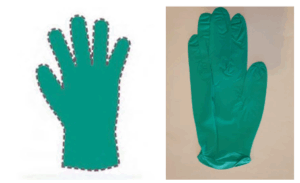Affirming a summary judgment decision finding no trademark infringement under the Lanham Act, the US Court of Appeals for the Ninth Circuit determined that the district court properly focused on domestic activity with regard to the allegedly infringing trademark. Doctor’s Best, Inc. v. Nature’s Way Products, LLC, Case No. 24-2719 (9th Cir. July 15, 2025) (Paez, Ikuta, Nelson, JJ.) (Ikuta, J., concurring).
Doctor’s Best (DB) manufactures nutritional supplements under the mark NATURE’S DAY at its California facility. Although the products bear English labels compliant with US regulations, they are marketed and sold exclusively in China, South Korea, and Taiwan.
Nature’s Way Products (NWP), owner of the long-standing US trademark NATURE’S WAY, opposed DB’s attempt to register NATURE’S DAY in the United States, citing potential consumer confusion. After NWP sent a cease-and-desist letter, DB preemptively sued for a declaratory judgment of noninfringement. NWP counterclaimed for trademark infringement under Sections 32 and 43(a) of the Lanham Act.
In June 2023, the Supreme Court held in Abitron Austria GmbH v. Hetronic Int’l, Inc. that the Lanham Act’s infringement provisions apply only to domestic “use in commerce.” DB moved for summary judgment, arguing that its only domestic activity – transporting products within the US – did not create a likelihood of confusion among US consumers. The district court agreed, finding that DB’s domestic transport of Nature’s Day products was insufficient to support a claim of infringement. The court concluded that no reasonable jury could find that this conduct would confuse US consumers and granted summary judgment in favor of DB. NWP appealed.
NWP argued that any domestic use in commerce, however minimal, triggered the full likelihood-of-confusion analysis, even if confusion occurred abroad. The Ninth Circuit rejected this interpretation, holding that Abitron requires courts to first identify domestic use before evaluating confusion. The Court found that DB’s manufacturing and transport activities were the only relevant domestic conduct.
Turning to likelihood of confusion, the Ninth Circuit applied the eight-factor test set forth in its 1979 decision in AMF Inc. v. Sleekcraft Boats:
- Strength of the mark
- Proximity or relatedness of the goods
- Similarity of the marks
- Evidence of actual confusion
- Marketing channels used
- Type of goods and the degree of care likely to be exercised by the purchaser
- Defendant’s intent in selecting the mark
- The likelihood of expansion of the product lines
Reviewing the Sleekcraft factors, the Ninth Circuit concluded that no genuine dispute existed as to the likelihood of confusion. DB’s products were sold exclusively overseas while NWP’s products were sold only in the US. The Court emphasized that confusion must occur among domestic consumers to be actionable under the Lanham Act, and that did not occur here.
In a concurring opinion, Judge Ikuta agreed with the outcome but clarified that DB’s transport of products constituted a domestic use in commerce. However, she found no genuine issue of material fact regarding whether that use caused domestic confusion, reiterating that Abitron excludes extraterritorial confusion from the analysis.
read more


 Subscribe
Subscribe



